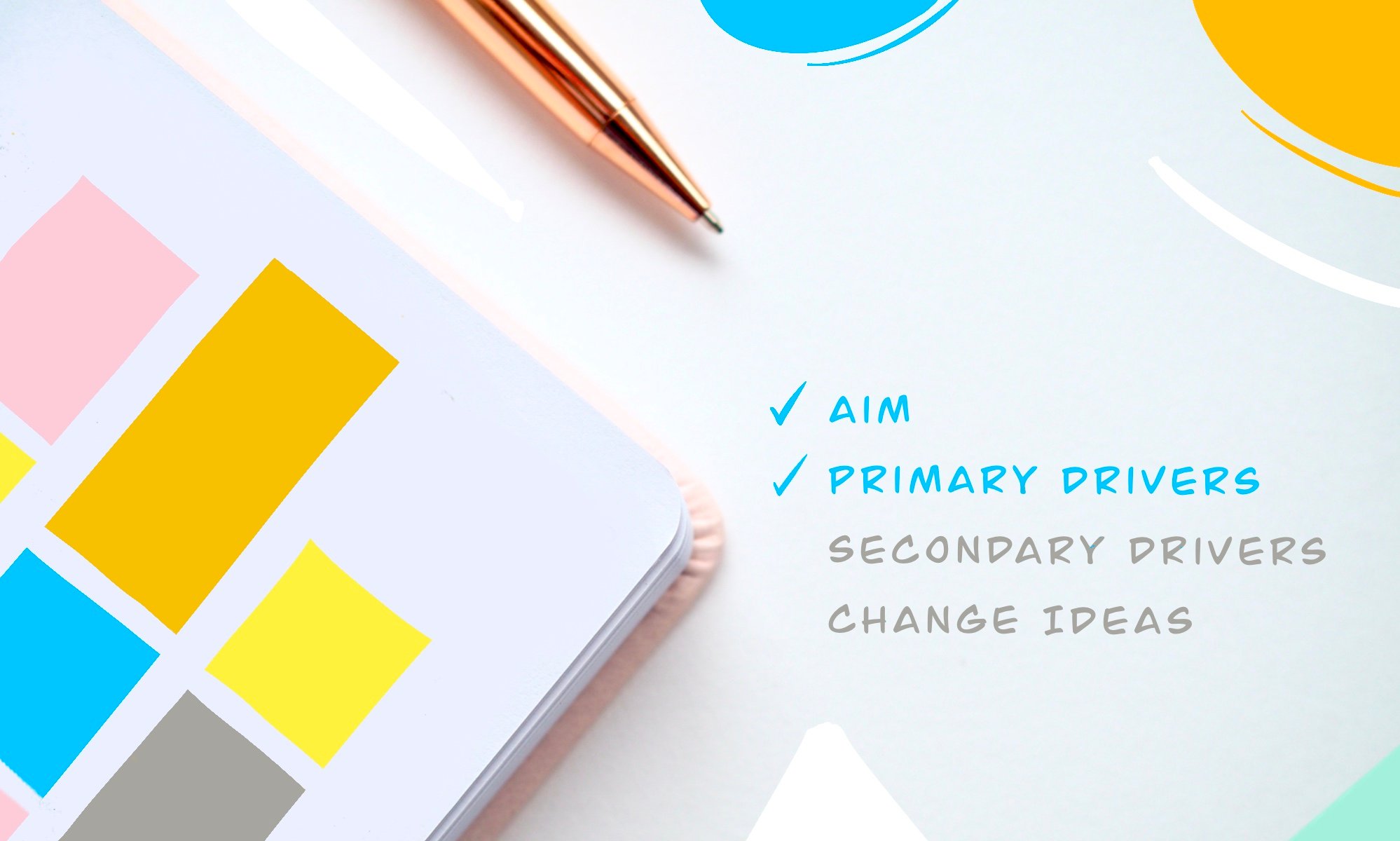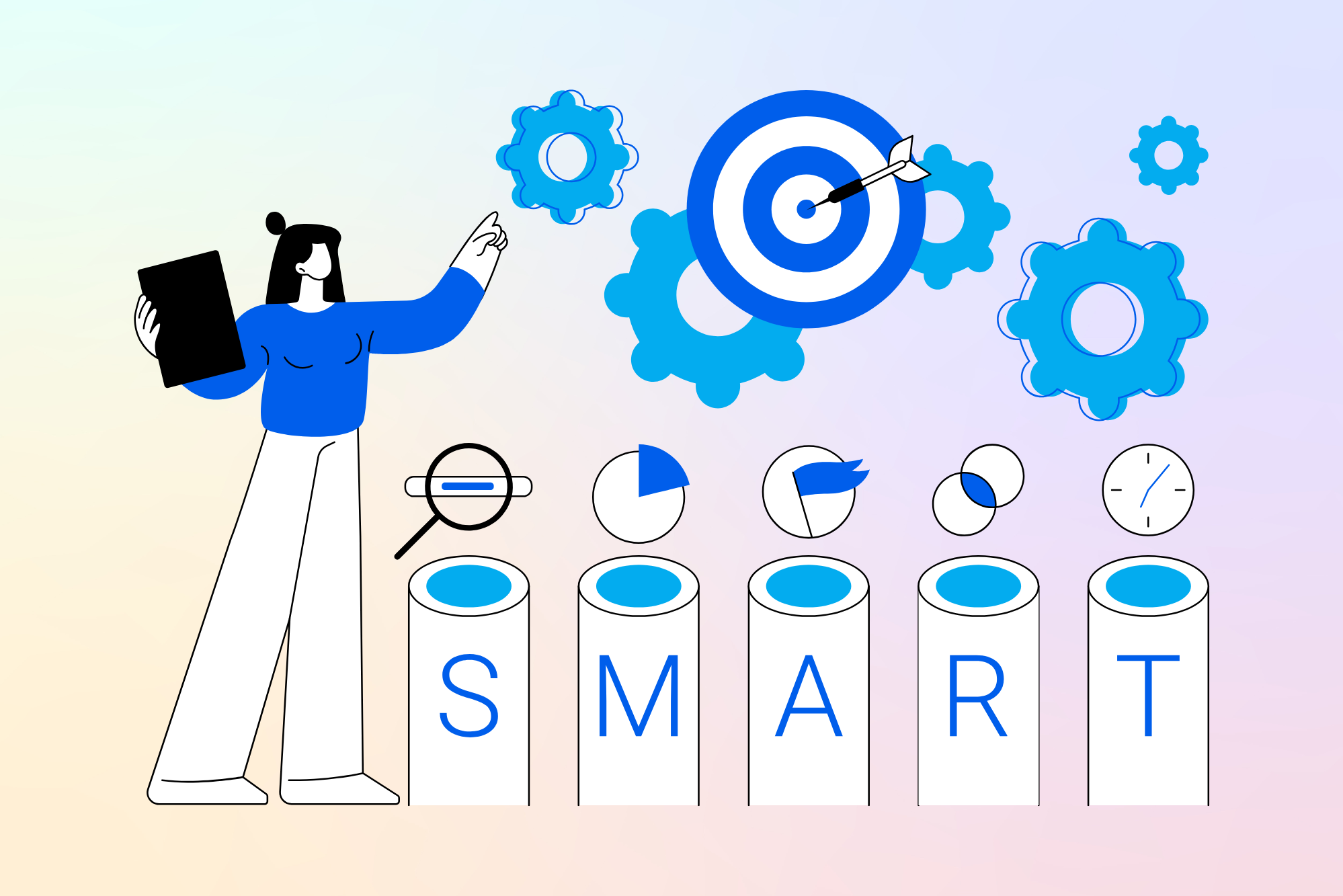Start improving with Life QI today
Full access to all Life QI features and a support team excited to help you. Quality improvement has never been easier.

Organisation already using Life QI?
Sign-up

In this blog we’re going to look at the process of how to develop a driver diagram. Described by the Institute for Healthcare Improvement (IHI) as a ‘visual display of a team’s theory of what drives or contributes to, the achievement of a project aim,’ driver diagrams can be a really useful way to visualise what your project is trying to achieve and how you are going to progress your Quality Improvement (QI) project. Let’s find out more about how to develop a driver diagram!
The first element you need to address is your ‘Aim’ of your driver diagram. Described by the National Institute for Children's Health Quality (NICHQ) as a ‘clear, explicit summary of what your team hopes to achieve over a specific amount of time including the magnitude of change you will achieve,’ the aim is vital to your driver diagram. Before you start the process of developing your driver diagram, you need to create your aim, which should be SMART : Specific, Measureable, Achievable, Relevant and Time-bound. The IHI have a helpful worksheet which will help you work through your aim statement. You can also read more about aim statements in our article.
To give you an idea of aim statements - and whether they are SMART or not – let’s take the example given in our blog ‘How to create an aim worth sticking to,‘ which gives some helpful examples. Firstly, an example of a ‘vague’ aim: "To reduce pressure sores on hospital wards" which doesn’t demonstrate how or when this aim will be achieved. So, let’s look at how you can apply SMART thinking to transform this statement into a more measurable aim statement
‘Specific. Get to grips with who is involved, where the project is taking place, and why it's happening. There should be a group-centric definition of the problem.
Measurable. How much? How many? Having a clear finish line offers teams a sense of accomplishment and an awareness of scope. Feeling like the project is just dragging on indefinitely will sap the project's energy.
Attainable. This is perhaps the trickiest part because you need to strike a balance between making the aim achievable and aspirational. It needs to be a stretch if it's going to adequately motivate the team. But, at the same time, it shouldn't be so overwhelming that team members quit before they've even begun.
Strategic. planning before starting a project can go a long way in ensuring that even sizeable aims are still attainable.
Realistic. Once you've ensured that your aim is attainable, you need to finally check that it's relevant to the real, every day running of your organisation. This will go a long way in inspiring motivation amongst your team members and key stakeholders.
Time. Bound. What is the deadline?’
The blog then gives the example of how – when using SMART techniques - the vague: "reducing pressure sores" can become a much more specific ‘aim’ such as "Reduce the number of patients leaving Ward D with hospital-induced pressure sores by 50%, by the 1st April 2023."
Once your aim is created, you can start drilling down into your primary and secondary drivers. And from there, also your change ideas.
Primary drivers underpin and drive the achievement of your QI goal and support you in bringing about change in your QI project. Primary drivers ‘may act independently or in combination to achieve the overall goal/aim,’ as set out in the NHS England and NHS Improvement’s Online library of Quality, Service Improvement and Redesign tools report on driver diagrams.
You could use brainstorming as a way to create your primary drivers with your project team members. This is a tried and tested way to help you break down the goal to create primary and secondary drivers. You can read more about primary drivers but: ‘very often primary drivers indicate the process measures that you need to consider (how you ensure that the project/change is being implemented as planned), and secondary drivers indicate outcome measures (how you measure success/improvement).’
This is when you break down the primary drivers further to create secondary drivers. Again, another job for your QI team and a potential brainstorm.
When you come on to the next step - writing down your change ideas to include in your driver diagram - you should remember that each change idea should have an effect on at least one of the secondary or primary drivers. These will all help you to achieve your aim.
With both primary and secondary drivers – and indeed your entire driver diagram - you could use a technology solution such as Life QI to help you easily create, develop and monitor.
The work you have done on creating your driver diagram – the creation of your primary and secondary drivers and aim - will help you develop your change ideas. These are essentially the specific actions that come out of your secondary drivers. Change ideas should always have an effect on at least one of your secondary drivers.
‘Change Ideas are the specific actions (i.e. the ideas for change) that you hope will result in improvement. They are a natural result of the secondary drivers generated on your driver diagram.’ Change ideas are also ideally measurable and also are small and should be easy to implement.
ELFT has a really helpful section on developing change ideas which recommends working with your team and stakeholders to create change ideas and then prioritise them. You can then ask the following questions: “Which of these would have the biggest impact on the Aim?” then, “Which of these is the easiest to do?”
You can read more about how to develop change ideas.
Driver diagrams can be – by their very nature – a solution for solving a complex problem. Various templates do exist that can help you create driver diagrams, for example: The NHS England and NHS Improvement ‘Online library of Quality, Service Improvement and Redesign tools’ report on driver diagrams includes a template in their report. There are also examples here.
As the QI team at East London NHS Foundation Trust state: ‘there is no right or wrong driver diagram – it should represent your team’s understanding of the system you are trying to improve.’
However, while templates can provide a useful guide for your creating a driver diagram, they do lack the measurement aspect which is so vital during QI projects.
It is so valuable to be able to measure progress during your QI project. And this is where a QI technology solution such as Life QI can really support you. It helps you to measure impact and scale on a regular basis with very little effort. With solutions such as Life QI, you can develop a driver diagram quickly and easily and measure their impact. You can also access, create and use other QI tools, such as PDSAs.
Using Life QI to develop your driver diagram is so much easier than using paper or a white board. You can use your software to post your drivers in the online driver diagram and any changes or edits can be done on the system. There’s a special ‘Measures’ page that helps you measure your project – there is also a ‘Change Ideas’ page for your change ideas. With all your QI project elements are available in one place, you can also see best practice and share ideas with other sites.
If you want to find out more about how you could use a solution such as Life QI to help you develop a diagram, take a look our help article which has some helpful tutorials and driver diagram instructions, and watch the video of how to create a driver diagram.
Good luck creating your driver diagram!
Full access to all Life QI features and a support team excited to help you. Quality improvement has never been easier.

Organisation already using Life QI?
Sign-up


.png)


